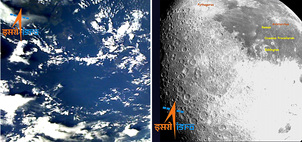Himalayan glaciers sensitive to climate change, rapidly shrinking

H imalayan glaciers are highly sensitive to climate change and are rapidly shrinking, posing a big threat to the populations that rely on them, according to scientific explanations.
Besides the ecosystem services that the glaciers provide, their melting increases the risk of runoffs and floods as recently seen with the Uttarakhand glacier disaster that claimed 26 lives and 197 persons still reported missing with rescue operations underway.
The science behind what is currently happening in the Himalayas was forecasted by the Intergovernmental Panel on Climate Change (IPCC) in its 2019 report that say glaciers would retreat in the upcoming years, causing landslides and floods.
Himalayan glaciers play an important role in South Asia, providing drinking water and water resources for agriculture, hydropower and biodiversity.
Glaciers in the Hindu Kush Himalaya region are a crucial water supply for the 240 million people who live in the region, including 86 million Indians, roughly the equivalent of the country’s five biggest cities combined.
Another comprehensive report two years ago, the Hindu Kush Himalaya Assessment, coordinated by the International Centre for Integrated Mountain Development (ICIMOD) notes that eastern Himalaya glaciers have tended to shrink faster than those in central and western Himalaya.
“While there is still some confusion as to what exactly caused the flood in Uttarakhand, we are working closely with our partners on the ground to understand what happened in this particular instance,” ICIMOD Director General Pema Gyamtsho said.
ICIMOD develops and shares research, information and innovations to empower people in the eight regional member countries of the Hindu Kush Himalaya region — Afghanistan, Bangladesh, Bhutan, China, India, Myanmar, Nepal and Pakistan.
Sounding an alarm, a 2019 discussion paper by The Energy and Resources Institute (TERI) notes the warming rate over the Himalayan region is projected to increase in the range of 0.5 degree to one degree Celsius by 2020s and one to three degrees by mid-century.
However, the warming rate is not uniform either spatially or temporally, it says. However, a 2017 study published in ‘Nature’ warns that even if global temperature is kept below 1.5 degrees, around 35 per cent of the ice mass stored in the high mountains of Asia will be lost. It says that number could increase up to 65 per cent in a scenario of high greenhouse gas emissions.
Describing the Himalayas a water tower, Jawaharlal Nehru University’s School of Environmental Science Professor A P Dimri said with increasing global warming, the upper reaches of the Himalayas are warming faster, leading to more rapid melting of the glaciers.
“This has resulted in an increasing number of glacier lakes, which are formed by water melting from the ice caps and accumulating at the mouth or snout of the glacier. These lakes also become reservoirs of ice and moraine debris. With an increase in this phenomenon, the breach of glacier lakes poses a severe threat to the communities living downstream.” With the Himalayan states prone to flash floods and landslides, this disaster prompted calls by scientists and experts for a review of hydropower projects in the ecologically sensitive mountains.






